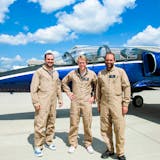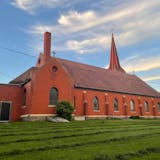Stephanie Beard knows where the most dangerous places are at the University of Minnesota — at least for birds. For years, the veterinary technician has been tracking their unfortunate collisions with windows on the Minneapolis and St. Paul campuses.
Now she's collaborating on an experiment to see if a new kind of ultraviolet-reflecting film can ward birds away from these danger zones.
This summer, a research team from the San Diego Zoo installed video cameras and "shock sensors" at three collision-prone buildings at the U, in what it calls its first test of the film in "real-life conditions."
Beard helped point the researchers to what she called "the most deadly areas on campus for bird collisions," including a three-level skyway on the West Bank and Coffey and Ruttan halls on the St. Paul campus.
That's one reason the scientists chose the U for its experiment, according to Paquita Hoeck, who is heading the research for the San Diego Zoo. "I was looking for a site that gets many bird-window collisions and where people had been recording them," she said in an e-mail interview.
The U, it turns out, is something of a magnet for birds because of its proximity to the Mississippi River flyway, a popular migration path for more than 300 species. It's the same reason that activists have been warning about birds colliding with the Minnesota Vikings' new glass-and-steel stadium in Minneapolis.
At the university, migrating birds tend to congregate, like travelers at a rest stop, in the fields of food plants and trees that dot the St. Paul campus. But navigating the nearby buildings has proved hazardous to their health. "The windows at Ruttan Hall are particularly large and dangerous," notes Beard, and the scene of "many fatalities" for Nashville warblers, yellowthroat and white-throated sparrows.
The U has made some low-tech attempts to get the birds' attention — plastering bird silhouettes and glitter squares on the windows, and placing plastic owls on ledges. But the crashes keep coming. The most dangerous time, according to Beard, is the fall migration from August to November.


